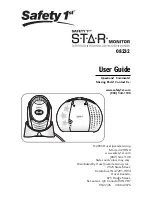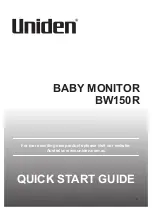
S
ta
e
12
M
a
18
UK
TECHNICAL SPECIFICATIONS
Configuration
Built-in Amplifier cont. RMS LF/HF
Built-in Amplifier max. RMS LF/HF
Built-in Amplifier max. peak LF/HF
Frequency Response
Low Frequency Woofer
High Frequency Driver
Max. SPL cont/peak
Dispersion
Input Impedance
Crossover Frequency
AC Power Requirement
Input Connectors
Power Cord
Net Dimensions ( WxHxD )
Net Weight
Transport Dimensions ( WxHxD )
Transport Weight
2
350 / 80
400 / 100
800 / 200
60Hz - 20kHz
12 - 2.5 coil
1 - 1.7 coil
124 - 130
90°
22
1.8
450
XLR with loop
16.4
21.65 x 11.37 x 15.43
29.98
26.37 x 16.92 x 19.68
36.15
way
W
W
W
-6dB
inch
inch
dB
H x V
kOhm
kHz
VA
ft
inch
lb
inch
lb
SWITCH MODE POWER SUPPLY
AMPLIFIER CLASS
CLIPPING
COAXIAL
CROSSOVER
DYNAMICS
DISPERSION
HIGH PASS FILTER
PINK NOISE
CONTINUOUS POWER
PEAK POWER
FREQUENCY RESPONSE
RMS
SPL
A unit that, before making the power available for internal use in the amplifier, converts the AC power supply into a
much higher frequency thanks to a switch mode circuit. The advantages of a switch mode power supply are its lower
weight and reduced electromagnetic emissions.
Power amplifiers are mainly classified according to the type of output stage. Such classification is based on how long
output devices remain active during each cycle. The most common classes of professional sound amplifiers are: A, B,
AB, D, G.
Digital distortion occurring when the amplitude of an input signal to a sampling device exceeds the dynamic range that
the same device can manage.
An element embedding another element on the same axis; for instance, a loudspeaker for low frequencies with
another loudspeaker for high frequencies fitted into or over its centre.
, network
High- and low-pass filters used for speakers do not cut-off undesired frequencies; the roll-off (filter attenuation) occurs
over a number of octaves. Common filter slope for speakers are 1st through 4th order, corresponding to 6dB/octave to
24 dB/octave.
, dynamic range
The dynamic range of a sound is the ratio between the strong and powerful part of that sound, and its soft and light part;
it is measured in dB.
the dispersion of a sound source is a characteristic that describes the directional feature of the relevant sound
emission. The two reference planes for the dispersion angle measurement of a sound source are the horizontal and
the vertical planes.
It is a filter letting the frequencies above a certain threshold pass, and cutting the frequencies below such threshold. It
is also called low-cut filter.
The noise is said to be pink, as opposed to the white noise. It is a non periodic noise, which includes frequencies from
the whole acoustic spectrum. However, unlike the white noise, it has higher amplitude at low frequencies and lower
amplitude at high frequencies, so to adjust to the human ear sensitivity, that is less sensitive to lower frequencies.
The maximum power an amplifier may supply continuously within a certain distortion range.
The maximum power the amplifier may supply for short periods of time without implying its saturation.
The frequency response is the actual frequency range a device can play.
«Root Means Square»; it is a value expressing the significant mean of the amplitude values of a sound wave.
Perceived sound volume or pressure, measured in decibels; the SPL is a function of signal amplitude.
GLOSSARY
















































